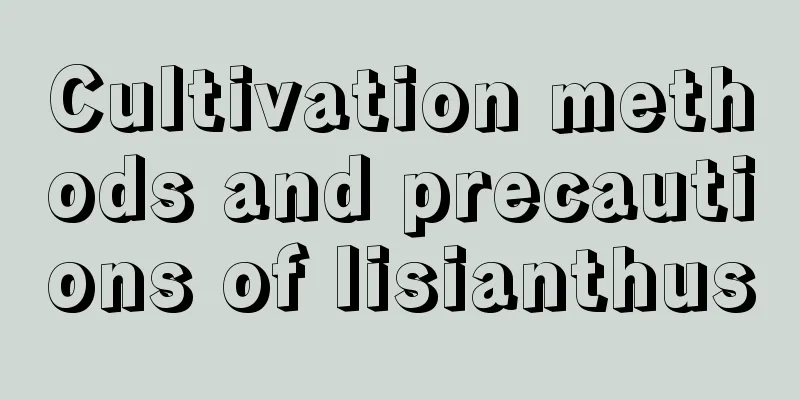Cultivation methods and precautions of lisianthus

1. SoilIt is recommended to use loose, nutritious, well-drained loam for potting soil. It is best to use garden soil improved with peat ash, rice bran and a little lime. 2. LightingIt prefers a sunny and warm growing environment. If it is guaranteed more than 16 hours of light a day, it will be very beneficial to the growth of stems, leaves and flower buds. 3. TemperatureThe temperature suitable for its growth is 15℃-28℃. It can tolerate the low temperature of 0℃ for a short time. The night temperature during the growing season must not be lower than 12℃, the minimum temperature in winter must not be lower than 5℃, and the maximum temperature in summer must not be higher than 30℃. 4. WateringIt likes a warm growing environment, but too much water will damage its roots and cause disease. Too little water will reduce the growth rate of the plant and cause irregular flowering, etc. Therefore, watering should be appropriate. You can water it a lot at one time. 5. FertilizationIt prefers fertilizer. It is recommended to apply thin fertilizer every 5-7 days. Flower fertilizer is mainly phosphorus fertilizer. Apply thin fertilizer before flowering. No fertilizer is needed during flowering. Apply thick fertilizer after flowering. 6. NotesLisianthus has very strict requirements for water. Too much water will cause problems with its root system, and too little water will cause unfavorable growth of stems and leaves. It is best to water it by dripping water when there is a shortage of water. |
<<: What to do with cyclamen in summer
>>: Velvet Arrowroot cultivation methods and precautions
Recommend
How to plant sweet potato seedlings
The planting depth of sweet potato seedlings has ...
How long after pruning asparagus fern can I water and fertilize it?
Asparagus fern , also known as cloud bamboo, is e...
How to grow Clivia to make it bloom? What are the signs of Clivia blooming?
1. How to grow flowers 1. Change the soil in time...
How to sow leek
Sowing time Allium orchid seedlings are more afra...
Flower language and plant culture of daylily
The Flower Language of Daylily The flower languag...
The efficacy and effects of basil
The nutritional value of basil Basil is edible, a...
The Difference Between Green Olives and Black Olives
1. Differences in tree trunks The trunk height of...
How to grow Angelica dahurica
1. Seed processing When planting, choose disease-...
Succulent plants grow from toothpick seedlings to bigger than your face, and this is the reason
Bear Paw How did it grow from a small seedling th...
What medicinal herbs are the most profitable to grow at the moment? (The current income is fast and there is no need to worry about selling medicinal herbs)
Planting medicinal herbs in rural areas has been ...
Reasons why the leaves of pineapple turn yellow
Basic characteristics of ornamental pineapples Or...
What to do if strawberries are dormant
Strawberry dormancy The dormancy phenomenon of st...
How to grow Clivia to make it bloom as soon as possible (tips to promote Clivia to bloom early)
Clivia is a flowering plant that many flower love...
Fig tree transplanting time and method Transplanting season and precautions
Fig trees are usually transplanted after their le...
Common pests of nasturtium and their control methods
Common pests of nasturtium: leaf miner Symptoms o...









